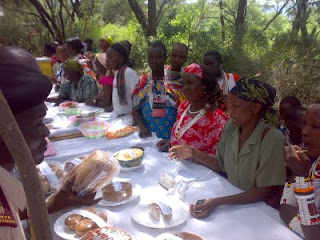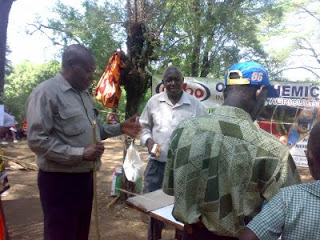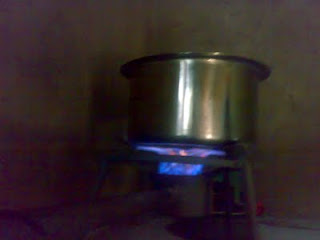During a stakeholders’ meeting for companies, interest groups, the government and NGOs working in Magadi division, the idea of carbon exchange or venturing in the carbon credits markets was raised and discussed as one of the long term plans to mitigate drought and climate change.
It was evident by the views of the members that very few people are aware of the opportunities the carbon exchange market presents.
Normally, carbon trade occurs when companies, mostly in the West, pay a fee for every amount of certified carbon dioxide released to the environment. The money is then used to pay other companies or organizations, which develop projects that facilitate less release of carbon dioxide to the atmosphere.
According to the Kyoto protocol, developed countries are obliged to fulfill specified targets of carbon emissions; countries that produce excess carbon can offset their emissions through projects in their country or by buying carbon credits from other countries.
This has created a multibillion shillings carbon market that companies, organizations and small scale farmers in Kenya can venture into. Carbon credit is the currency for trading carbon emissions and one carbon credit is equivalent to one ton of carbon dioxide emission.
Opportunities in carbon trading can be utilized in different ways. Projects by organizations that are environmental friendly and provide alternative energy sources that help in reducing carbon emissions can be funded depending on the amount of carbon emissions the project intents to reduce.
For instance, the Maarifa Centre’s Biogas project provides a clean source of energy. It can account for carbon credits in two ways, first it utilizes the methane produced by decomposing animal waste and therefore it is not released to the atmosphere and second it provides an alternative bio-friendly energy source for cooking reducing the use of firewood or charcoal.
Kenya’s electricity power generator, Kengen, earns an estimated Shs442 million every year from the sale of 660, 000 tons of Carbon credits to the World Bank as a compensation for the carbon production avoided by generating geothermal electricity.
In October last year, Mumias Sugar Company made an agreement with the World Bank in which the company was to be paid 22 million from selling 43, 000 tons of carbon credits arising from its electricity generation plant that uses sugarcane. Both cases reduced the use of power that is generated from diesel generators by Kengen and therefore reducing the carbon released to the atmosphere by the diesel engines.
Farmers can also benefit from the market in different ways. Farmers can plant trees in their farms and then get compensation for the amount of carbon the trees are absorbing from the atmosphere. Organic farming methods, afforestation, reforestation and agroforestry can fetch farmers in Nguruman extra income.
In Kenya, farmers from Embu, Meru, Mara and Nanyuki are benefiting from The International Small Group and Tree Planting Program (TIST).The TIST program has recruited 7,135 small groups of farmers with a total of 52,637 members to plant trees and earn compensation from carbon trading.
The farmers are provided with tool kits that guide them throughout the process of tree planting from preparing nurseries to transplanting the seedlings and managing the trees. The group’s earnings are paid to its account and they are guided in managing the finances.
The program provides a local TIST organizer to help the farmers in utilizing the toolkit and also in documentation. There are random and annual audits to ascertain the progress and performance of the groups.
Seeking carbon exchange financing
While seeking for funds from the carbon trading market, one needs to prove that the project or activity either absorbs carbon from the atmosphere or reduces emission of the gas to the atmosphere.
The project needs to prove that the reduction of emissions and Sequestration – absorption of carbon from the atmosphere by plants through photosynthesis- would otherwise not have happened without the existence of the project.
It also needs to quantify with precision the amount of carbon emission the project is reducing or the absorbing by providing accurate data about the project’s activities for example the number of trees, their age and size.
The projects need clearly monitoring and evaluation that involve pictures and GPS record of the sites where the project’s activities are taking place.
The World Bank and other organizations have produced guides for communities and task leaders which would enable them to attract carbon markets. Some of the guides are linked below.
USEFUL LINKS
http://www.fao.org/fileadmin/templates/ex_act/pdf/carbone_finance.pdf http://www.gvepinternational.org/sites/default/files/carbon_finance_guide.pdf
http://siteresources.worldbank.org/INTCARBONFINANCE/Resources/TTL_guide_cd.pdf
http://www.kenyaengineer.or.ke/index.php/kenyaengineer/article/viewFile/232/252














